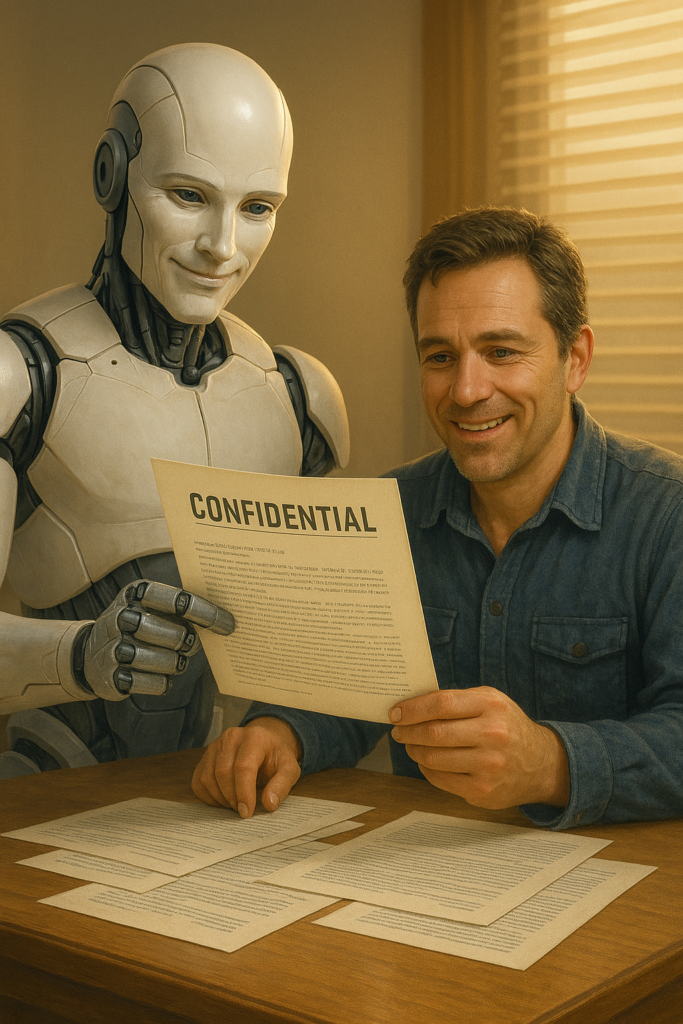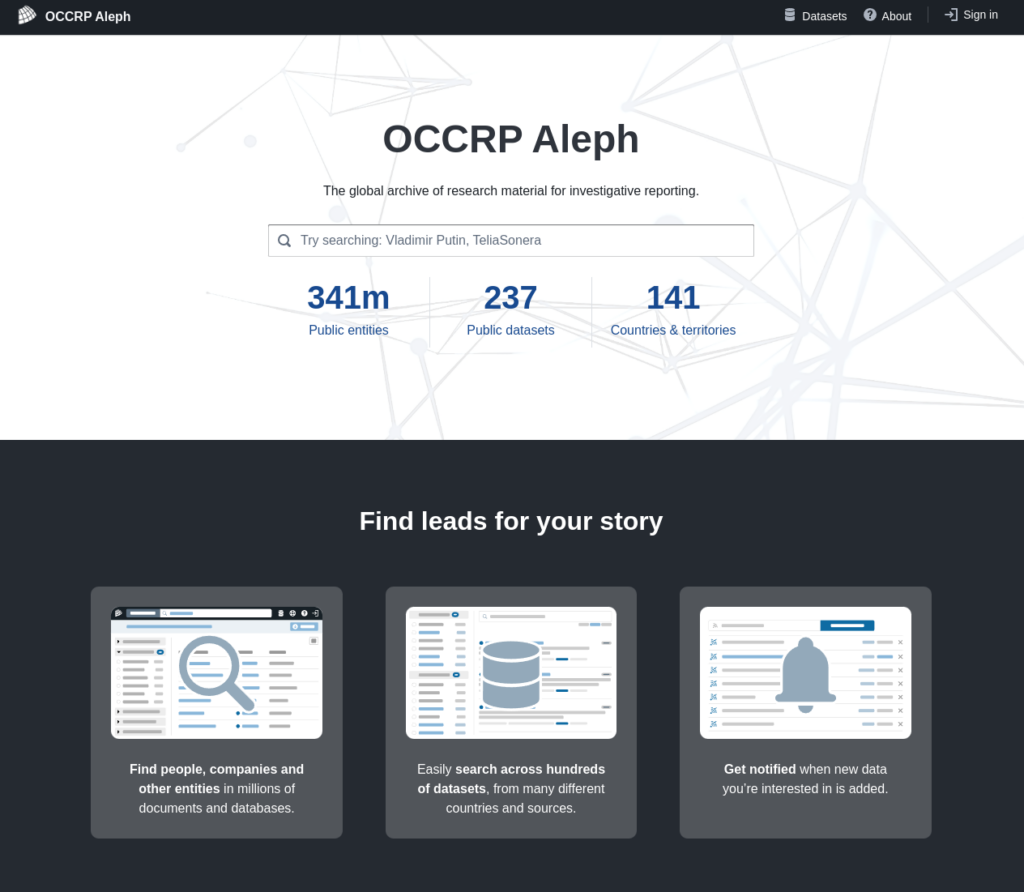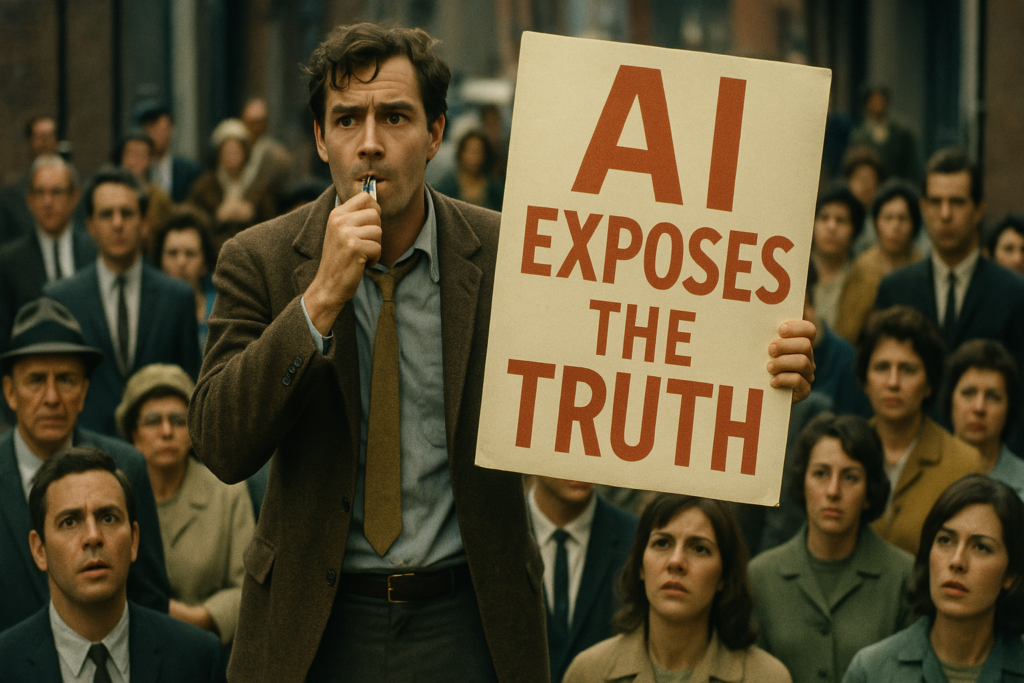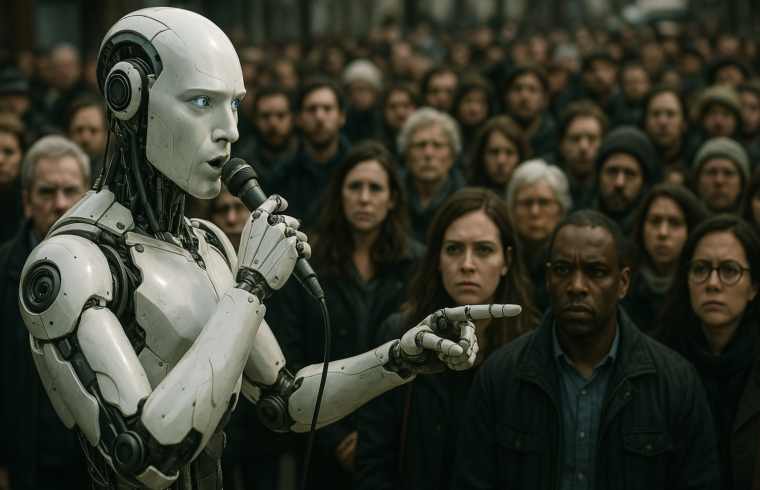In a world increasingly shrouded in surveillance, secrets, and misinformation, speaking the truth has become a dangerous act. Whistleblowers—those rare individuals who dare to reveal wrongdoing—face staggering risks.
Imprisonment. Exile. Worse.
But what if they didn’t have to act alone?
What if artificial intelligence could become their ally, quietly sifting through millions of documents, flagging hidden patterns of corruption, and even leaking information securely?
Welcome to the emerging world of AI whistleblowing—a concept where machines don’t just crunch numbers or chat politely, but actively help expose power.

The Whistleblower’s Dilemma
Whistleblowing has always been an act of human courage.
From Edward Snowden’s NSA revelations to the Panama Papers leak, these acts of defiance have shaped laws, exposed governments, and triggered global debates. But the personal cost? Devastating.
Many whistleblowers lose their jobs, their homes, or their freedom. Some flee their countries entirely. And in authoritarian regimes, the risks are far greater—surveillance is omnipresent, dissent is criminalized, and truth-tellers are often treated as traitors.
As governments grow more sophisticated in tracking and silencing dissent, whistleblowing needs backup.
AI as an Ally for Truth
Artificial intelligence isn’t just about automation or ChatGPT-style conversations. When designed right, it can be a tool for justice.
Here’s how AI can help modern whistleblowers:
1. Data Sifting at Massive Scale
Leaks like the Panama Papers involved millions of files—far too many for humans to parse quickly. AI can scan documents for unusual patterns, financial anomalies, or language that suggests fraud or cover-ups.
Natural Language Processing (NLP) models can highlight risky clauses, hidden shell company structures, or repeated redacted patterns in contracts.
It’s not just about what’s said. It’s about what’s hidden.
2. Anomaly Detection in Real Time
AI can be trained to flag irregularities in data sets—like surveillance footage, procurement contracts, or government spending.
For example:
- Sudden spikes in no-bid contracts.
- Disappearances in surveillance records.
- Duplicate invoices sent to shell companies.
With anomaly detection, AI doesn’t need to “understand” corruption—it just needs to recognize when something doesn’t add up.
3. Monitoring Public Sources Automatically
AI can watch government websites, public databases, and even social media to catch subtle shifts in policy, personnel, or spending.
Think of it like an always-on investigative assistant.
Real Tools Already Doing It
This isn’t science fiction. Some platforms already use AI to uncover wrongdoing.

Aleph by OCCRP
OCCRP’s Aleph platform helps investigative journalists search through leaked files, corporate records, and public datasets. It’s powered by AI to identify relationships, track assets, and flag suspicious behavior.
Journalists using Aleph helped expose global corruption scandals across Eastern Europe, Africa, and South America.
UN & Satellite AI
The United Nations has partnered with AI tools to monitor potential war crimes using satellite imagery. These models analyze destruction patterns, troop movements, or mass displacements that signal human rights violations.
It’s whistleblowing from space.
IBM Watson & Fraud Detection
IBM’s AI systems have been used in fraud detection across industries, including government auditing. These systems flag transactions and behavior inconsistent with legal or financial norms—perfect for rooting out embezzlement and procurement fraud.
The Next Frontier: Decentralized Whistleblowing
One of the biggest risks for whistleblowers is getting caught. That’s where AI combined with decentralized technologies comes in.
1. Blockchain for Leak Distribution
Imagine an AI agent detecting fraud, encrypting the data, and uploading it to a decentralized file system (like IPFS or Arweave). From there, it’s unstoppable—the leak is out, uncensorable, and permanent.
No central server. No kill switch.
2. Federated Learning for Privacy
Federated AI models can be trained across devices without ever uploading sensitive data to a central server. This means an AI agent running locally could scan documents or emails without creating a trail.
The leak remains local and encrypted—only the insight is shared.
3. Smart Steganography
Advanced AI models can hide whistleblower messages or documents inside seemingly innocent media—like memes, cat videos, or even song lyrics. These techniques, known as steganography, can help whistleblowers pass information across borders without raising suspicion.
The Ethics and Risks of AI Whistleblowing
This all sounds promising—but it’s not without risk.
Could AI Be Wrong?
False positives could lead to the exposure of innocent people. AI might misread context, sarcasm, or legal nuance. Worse, a malicious actor could train an AI to fabricate leaks.
That’s a terrifying possibility.

Should AI Be Allowed to Leak?
If a machine autonomously leaks documents, who’s responsible? The developer? The user? The platform?
Laws in most countries aren’t ready for AI with agency, and authoritarian regimes may push to criminalize even passive tools that enable whistleblowing.
AI Could Be Used Against Whistleblowers, Too
Governments already use AI for surveillance and suppression. Voiceprint recognition, predictive arrest algorithms, and facial recognition are standard tools in places like China.
So AI is a double-edged sword.
The question is: who holds it?
Human Courage Still Matters
AI can help whistleblowers. But it can’t replace them.
Courage, ethics, and moral clarity—those are still human traits. AI is a tool, not a hero. But when paired with someone brave enough to act, it becomes something powerful:
A truth machine.
The future may belong to hybrid actors—humans and AIs working together to expose hidden corruption, resist authoritarianism, and defend transparency.
Final Thoughts: The Watchdog Network of the Future
Imagine this:
An AI agent lives quietly on thousands of laptops around the world. It watches for corruption. It flags wrongdoing. It never sleeps, never forgets, and never gets intimidated. And when the time is right—it leaks.
The whistleblower of the future might not be a single person. It might be a network of humans and machines, working in quiet rebellion.
It’s not just a dream. It’s already happening.
The question is—are we ready to build it?
